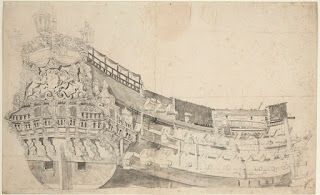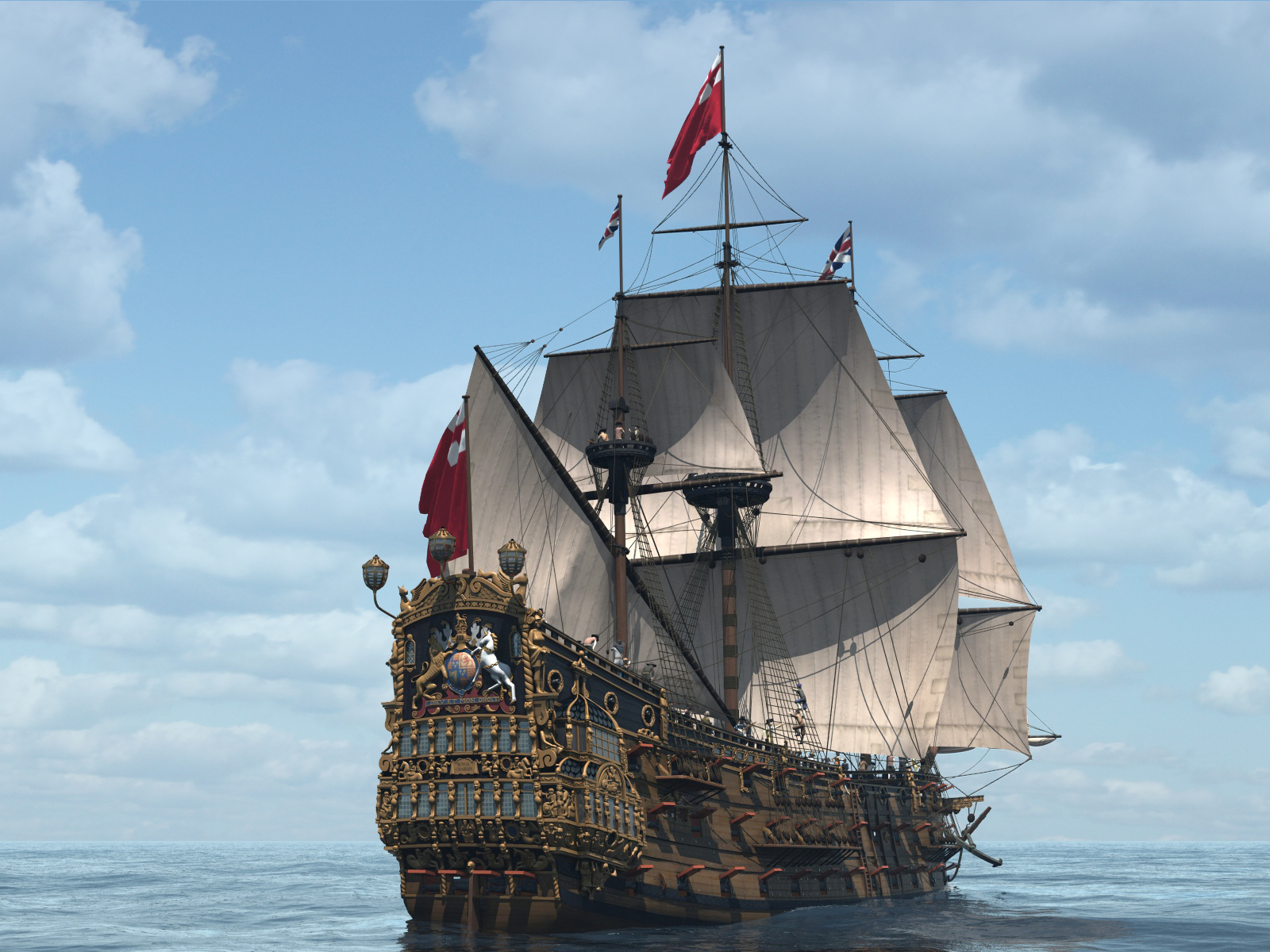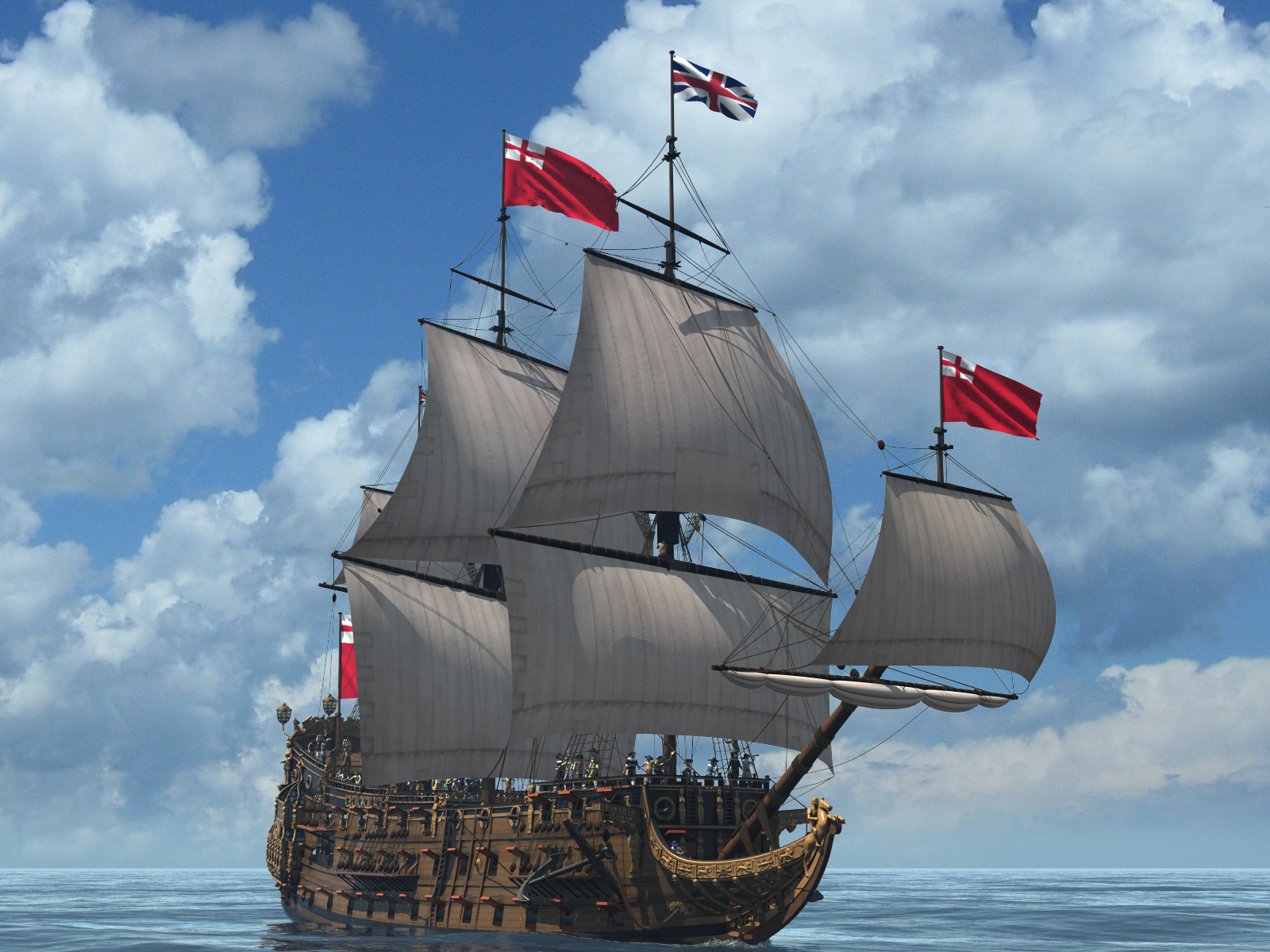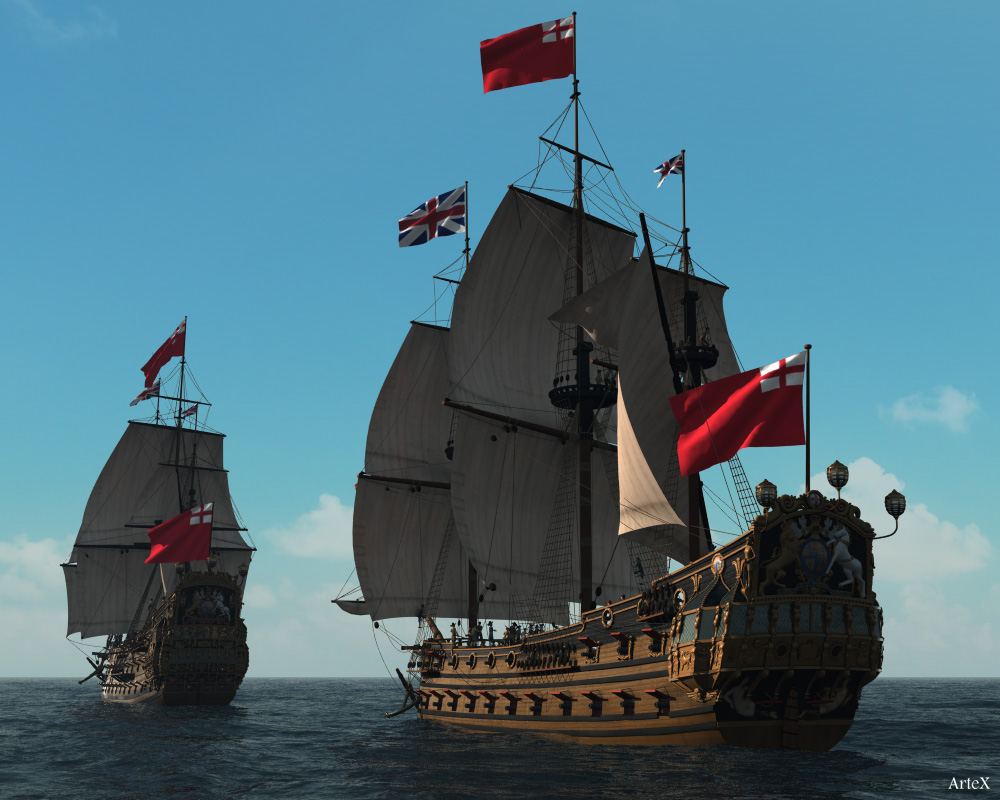So this blog is called Bloodflag. It was just a name that fell into mind when I had to chose a name for it....
Why? Because I have been intrigued by this flag that I put on the stern on the Brederode. Apparently this 'Bloedvlag' or bloodflag was pretty common for Dutch ships in the early 17th century.
The flag shows an arm with a sword on a red background. Oddly, the sword looks a bit oriental to me. It certainly doen't look like a sword from the middle ages or the small-swords that were common during that period in Europe.
I found some documentation on this flag but it doesn't quite explain everything.
It states that the origin of the flag was in the Eighty-years war, in which the Dutch fought their independence against the Spanish. This could explain the shape of the sword. In the early years, the Dutch rebels and predecessors of the Dutch navy; the 'Watergeuzen' used Muslim and Ottoman symbols to taunt the Spanish. Since the biggest enemy of the Spanish empire was the Ottoman empire, the Dutch rebels frequently flew flags with crescent moons and used the slogan "rather Turkish then Catholic". It is just a theory, but it could explain why the sword looks like a Turkish one.
The use of the flag is not restricted to the war against the Spanish. I have also found paintings and drawings where it was used during the 1st Anglo-Dutch wars, The Nordic war, and fights against Dunkirk and Barbary pirates.
The red colour and the sword seem to suggest is is some kind of a battle flag. In the 17th and 18th century, when pirates hoisted a red flag, it ment very bad news for their enemies. It ment they wouldn't accept a surrender. Everyone would be killed, whether they opposed them or not.
In other navies a red flag was often was used as a signal to engage or attack.
Here I run into problems, The documentation also states that it is a battle flag.
But I have found quite a few pictures where the flag is hoisted when there are no enemy ships around.
So to me, his makes the true meaning of the Bloedvlag flag pretty fuzzy. Clearly a red flag with a sword is not ment to be friendly. But was it an exclusive battle flag? A flag that was used as a national symbol? Or just a dangerous looking flag to warn any enemies not to mess with the owner?
Anyone who can tell me more about this would be very welcome.
![]() |
| 1939 Battle of the Downs against the Spanish |
![]() |
| 1939 Battle of the Downs. Although in monochrome, the arm with sword is recognizable on the flag. |
![]() |
| The Dutch flagship 'Amelia' engaging English Ships in 1652-53, flying the bloodflag |
![]() |
| Battle of the Sound 1658. Both Swedish and Dutch flags have red ensigns. The Dutch flag has the sworded arm. |
![]() |
| the Booodflag in a peaceful setting |
![]() |
| I don't think if this Red flag is with the arm, but again this setting in pretty peaceful |
![]() |
Action Between the Dutch Fleet and Barbary Pirates, around 1670.
The latest version I could find of a Dutch ship flying the Bloodflag. |




















;+Warship;+80-86+guns.jpg)
;+Warship;+80-86+guns+3.jpg)














